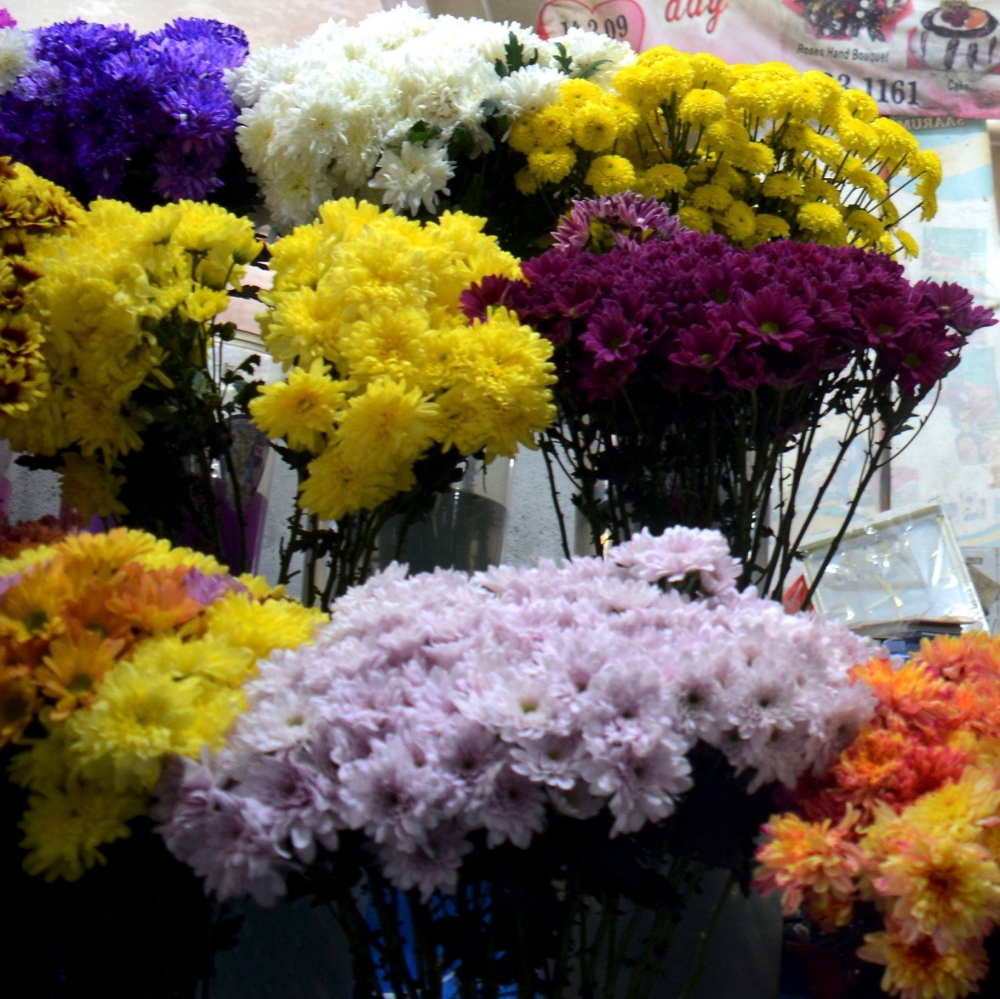
Chrysanthemums are regarded as a ‘must-have’ for the Lunar New Year, in that they symbolise good health. — Bernama photo
AS the Lunar New Year draws near, local florists are now displaying vibrant and beautiful blooms for customers to choose from – either at the physical shops or markets, or via the Internet.
This is amidst the outbreaks of the Covid-19 variant Omicron in many countries, which may dampen the sales this year.
Still, the ‘Year of the Tiger’ is approaching, and whether it is embedded in some traditional beliefs or simply being a long-time practice that signifies our inner satisfaction over and appreciation for natural beauty, we can indeed celebrate the occasion with flowers.
With respect to varieties, there are multiple charming blossoms coming out now such as chrysanthemums, camellias, orchids, bromeliads and gloxinia, as well as non-flowers like jade plants or the ‘money tree’ and crassula (pigmyweeds), and also the traditional orange, mandarin or pomelo trees.
In this modern day, artificial flowers and decorative plants are sold abundantly in many shops. However, for the offering meant to be brought to the temples, churches or even the cemeteries, the demand is always for fresh flowers.
Chrysanthemums
Chrysanthemums are what we regard as ‘a must-have’ for the Lunar New Year, in that they symbolise good health. There are more than 10 special breeds in various colours, sizes and shapes. The ‘dwarfing’ of the flowers are aided by hormones to achieve uniform size and also a uniform ‘blooming time’ for them to be ready for the market.
The sale-ready condition is also subject to the day-length treatment – a daily 14-hour ‘period of darkness’ for up to two months prior to blooming.
All plantlets used to be imported from Holland.
The chrysanthemum is a flowering member of the Asteraceae family and is ‘related’ to sunflowers, dahlias, marigolds, zinnias and cosmos. Each bloom is made of many tiny flowerets. These are known as ‘quilled blooms’, ‘spider blooms’ and ‘anemones’ where the central disk have multiple petals surrounding it.
Believed to have been originated from Asia, chrysanthemums have long been undergoing hybridisation to achieve market speciality.
- Cultivation tips
– Growing in the tropics requires special sun-shade to avoid overheating. The soil should have a neutral pH of 7, and also incorporate well-composted potting mix. Mulching with coconut fibres is a good way to keep the soil cool and maintain viable moisture. Slow release is recommended for whole lifespan of the plant. It is important to provide sufficient watering to promote good growth, just as you would for a tomato plant. The typical pests and diseases affecting the plant are mites, mealy bugs and aphids. - Health benefits
– Many of us often drink chrysanthemum tea, not knowing the health benefits of such a natural beverage. It is touted of being able to ‘relieve heat’ from the body, mitigate symptoms of cold, aid blood-cleansing, improve cardiovascular functions, lower cholesterol level, as well as it to improve eyesight by increasing sharpness of vision, maintaining moisture in the eyes and addressing ‘spotty vision’.
Chrysanthemum tea is said to contain Vitamins B9 and B6.
Orchids

Orchids are usually associated with fertility and abundance.
Many types of orchids are not too difficult to plant.
A favourite flower species for displays, orchids usually last longer than other horticultural blooms.
In terms of varieties, we have the dendrobium, the vanda, the arachnis (spider orchid), cymbidum (boat orchid), the phalaenopsis (moth orchid), the cattleya, and the oncidium as amongst the most recognisable ones. Of the few types usually chosen for displays during festive occasions, the butterfly-shaped phalaenopsis is a favourite, with each bloom having a string of eight to 10 flowerets.
Some orchids have soft and sweet fragrance, with the scent pleasantly noticeable in early morning or late evening when the air is damp.
Symbolism
One of the criteria in selecting flowers and also other plants for the Chinese New Year or Spring Festival celebration is tradition, or the symbolism that each of them represents.
Orchids are usually associated with fertility and abundance, while a fruit-bearing orange tree represents abundance and happiness.
A pair of pomelos sharing a twig signifies good luck and strong familial ties; a bunch of luscious jujubes (Chinese red dates), plums or grapes also symbolises good luck, as well as prosperity.
Other flowers representing good fortune are pussy willows, narcissus (water fairy) and peach blossoms, which also symbolise growth.
Planting tips
I would like to share my experience in planting ‘limau kasturi’ (calamansi) and kumquat trees. Last year, I planted some 50 plants using grafted materials that were ready for cultivation, which my friend Lim bought for me at RM8 per plant.
I had cleared a plot for planting and all I did was making planting holes with average surface area measuring 1.2 feet by 1.2 feet, and a depth of around two feet.
After adding in basal fertiliser-lime, NPK and soil mixture, I inserted the plantlets and cover them properly.
One should remember to water them sufficiently as the weather might not always be conducive to creating a good establishment.
Weeding should be done as well, with additional nutrients via foliar spray and 15-15-15 NPK being intermittently applied.
Flowering should begin after six months for the first season. The fruits must be protected against skin rust and at times, scalding too.
Pests like sooty mould could strike some trees.
The shrubs would need regular pruning; otherwise, there would be too much branches and leaves that could lead to overgrowth and lack of flowering.
The fruits should be ready for harvest within three months after flowering.
Happy New Year to you, and I wish you success in your gardening.
